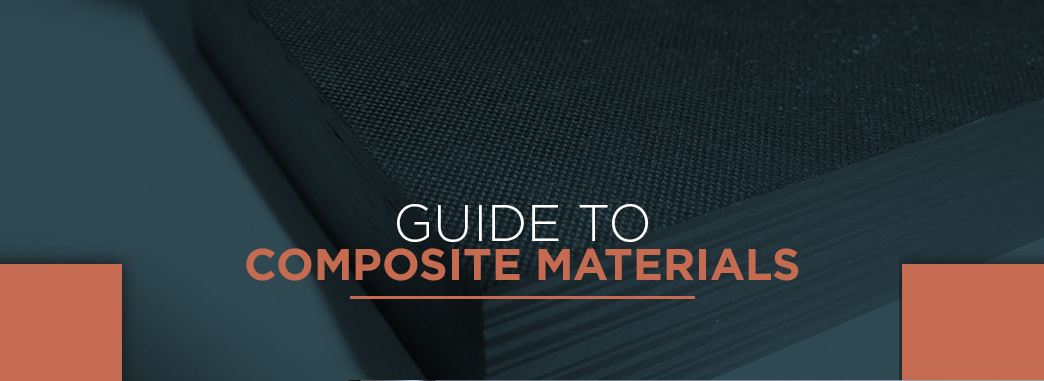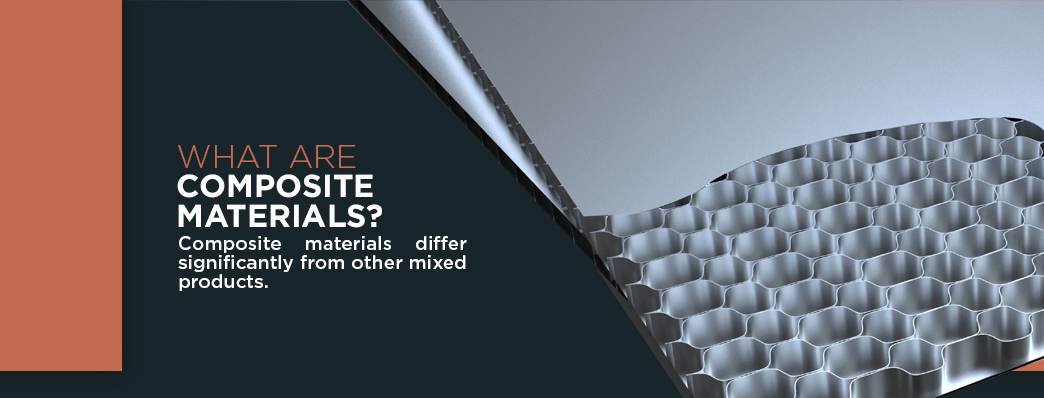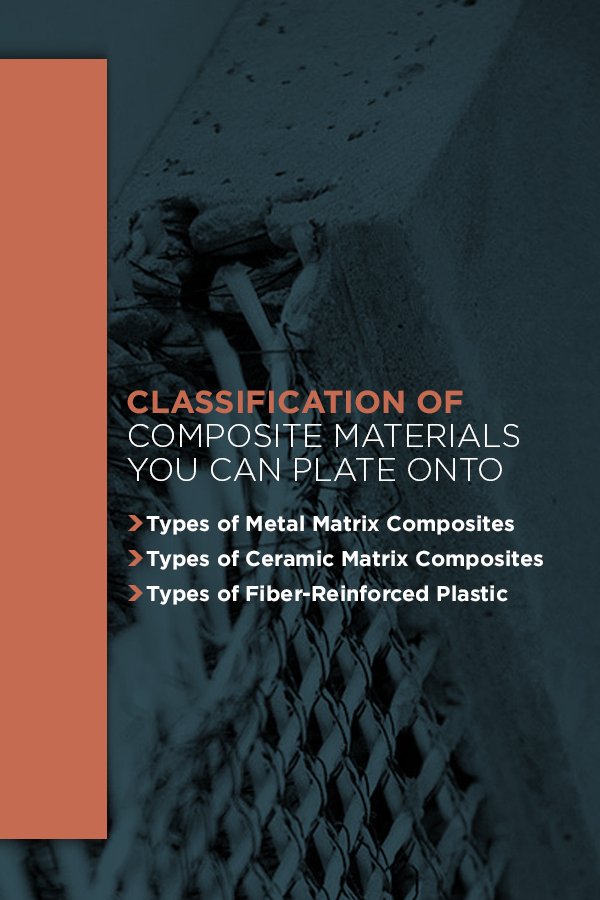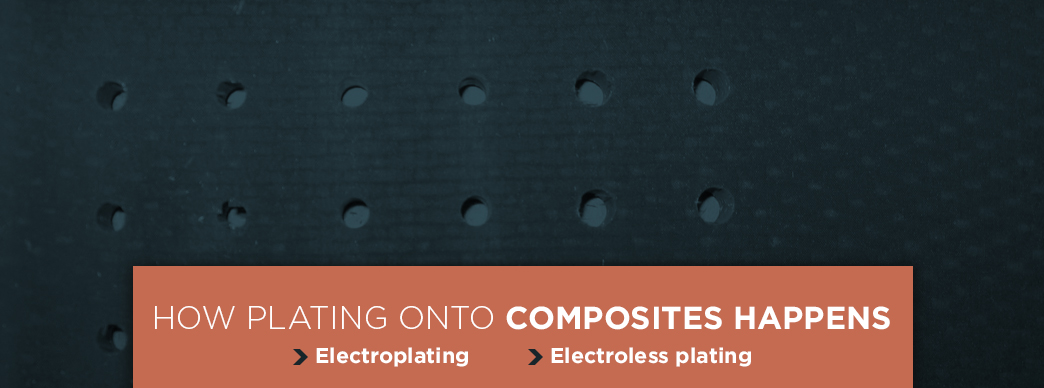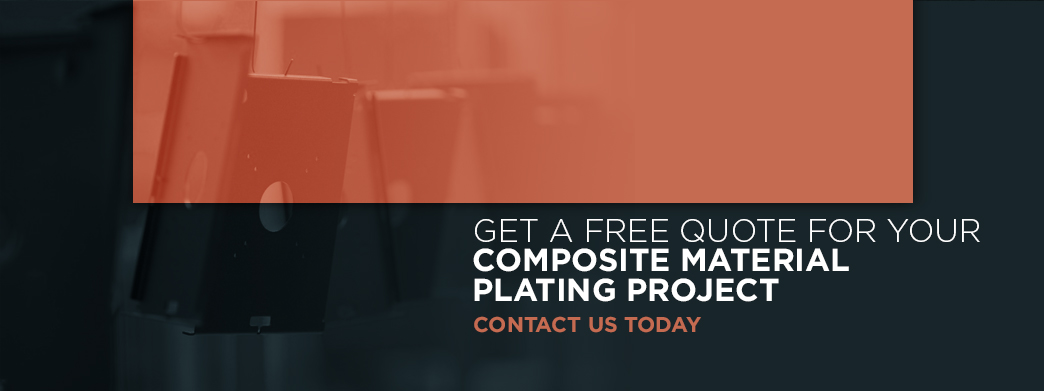Composite materials have very different properties from alloys and pure bases. If you have a plating project, understanding the substrates will help you decide the finishing you need. Thankfully, comprehending composite materials and how plating works on them does not require a degree in chemistry. You only need to know the basics to make an informed decision about the plating you need for your project.
Quick Links
What Are Composite Materials? | Applications of Composite Materials?
Classification of Composite Materials You Can Plate Onto | Types of Metal Matrix Composites?
Types of Ceramic Matrix Composites | How Plating Onto Composites Happens?
How Electroplating Works | How Electroless Plating Works?
Get a Free Quote for Your Composite Material Plating Project
What Are Composite Materials?
Composite materials differ significantly from other mixed products. For instance, an alloy combines two metals into one. However, composite materials have components that have significantly different properties. As with many designs, though, these materials prove the whole is greater than the sum of the parts. Combining the items in composite materials creates a stronger finished piece.
Unlike alloys, which thoroughly combine the two metals until you cannot distinguish the original parts, composite materials have a final structure that still allows you to identify the original components quickly. Think about concrete. You can clearly see the smaller rocks that make up the mixture of cement and aggregate. This example illustrates the nature of composite materials as strong structures with readily seen parts.
Due to their structure, many composite materials are created in molds. Sometimes, you can cut the molded shapes, depending on what makes the composite. As in the case of concrete, cutting straight lines is difficult because the rocks in it could prevent a perfectly straight edge or result in crumbling.
Despite the difficulty in cutting composite materials, many types still can accommodate other forms of finishing, like metal plating. Plating onto composite bases is only one application of these materials.
Applications of Composite Materials
As you’ve seen, concrete is a standard application of composite materials, but this example is only one of how combining parts creates a better whole. Here are a few more examples of composite materials:
- Plywood: Plywood does not come from a single tree. Instead, it has layers of angled wood to create stronger boards than those that you could make from individual planks.
- Fiberglass: Fiberglass is a type of fiber-reinforced plastic used to make lighter and more durable parts.
- Bakelite: A home example of composite materials is Bakelite, a brand of stronger plastic dishes made of reinforced plastic.
While you regularly encounter the above examples of composite materials during your daily life, you may be less aware of the variety of commercial-grade products and how those get improved through plating. If you have base composite materials made of a ceramic matrix, metal matrix or fiber-reinforced plastic, find out how you can improve on these already quality materials through plating.
Classification of Composite Materials You Can Plate Onto
A common misconception about plating concerns the base material. Some people think only metal parts can accommodate a metal finish. However, our experts at SPC have perfected the craft of plating onto non-metal bases, like ceramic matrix and fiber-reinforced plastics. Additionally, we can also improve your metal matrix materials with a finish, too. The finish you choose can help improve the wear resistance or hardness of the composite base.
1. Metal Matrix Composites (MMCs)
Combining low-density metals like magnesium or aluminum with a fiber or ceramic matrix creates a better performing material than metal alone. MMCs offer several advantages over unreinforced metal:
- Better resistance against wear
- Improved heat tolerance
- Lower thermal expansion
- Higher ratio of strength to density
- Higher ratio of stiffness to density
- More fatigue resistance
Despite these advantages, the cost of production and reduced ductility mean not everyone uses MMCs for all applications. Many engineers feel reservations about using MMCs too often due to the corrosion that may occur between the metal and the reinforcements. This corrosion depends significantly on the materials used as well as the environment, but for use in wet conditions, MMCs may require surface strengthening through plating.
Common applications for metal matrix materials include automobiles and planes.
- Automobiles: The heat resistance of MMCs make these materials well suited for brake and engine components that require lighter weight than old-fashioned cast iron used in their construction.
- Planes: Scientists are working on superalloys using titanium wires to reinforce the matrices for use in jet engines. The metal wires allow these MMCs to withstand temperatures up to 1,830 degrees Fahrenheit.
Types of Metal Matrix Composites
Three things affect the type of MMC — reinforcement type, reinforcement geometry and the metal.
- Reinforcement type: The type of reinforcement determines the kind of MMC. Ceramics are among the most commonly used reinforcement materials. Silicon carbide (SiC) and aluminum oxide (Al2O3) are widely used for automobile parts.
- Metal: While scientists use a variety of metals for MMCs, the most commonly used one is aluminum.
- Geometry: The structure of the reinforcement plays a major role in the strength of the MMC, but it also contributes the most to the cost.
The morphology, also known as structure, of reinforcements for MMCs vary with shape and price.
- Continuous fiber: The most robust and most expensive reinforcement structure is continuous fiber. This structure’s best attributes occur in the direction of the fibers.
- Chopped fiber: Chopped fiber, also called whisker, perform best along the grain. However, this design does not match the features of continuous fiber. Price-wise, this structure usually has the median price of the three morphologies.
- Particulate: The lowest in cost, particulate, also has the weakest design.
Though MMCs have benefits and downsides, they are not the only composite option available. Ceramic matrix and fiber-reinforced plastics are other common composites that may require metal finishing.
2. Ceramic Matrix Composites (CMCs)
As with MMCs, CMCs rely on a reinforcing structure to increase the strength of the base material. Unlike MMCs, which reinforce metal, CMCs strengthen ceramics with ceramic fibers. The results are impressive and have applications in multiple industries:
- Airplanes: Components of planes take advantage of the high heat resistance of CMCs, which withstand temperatures 500 degrees Fahrenheit higher than nickel alloys, which were previously used in aircraft. CMCs also weigh one-third less than their nickel counterparts. Heat resistance and a light weight make CMCs a natural choice for airplane engines. GE has replaced its Boeing 777 engine with an upgraded model, the GE9X, that uses five CMC parts.
- Turbines: CMCs have the durability and heat resistance needed to withstand the stress inside industrial turbines. The CMC-coated turbine in Florence, Italy, ran thousands of hours without wear, despite moving hot air constantly.
While ceramics alone withstand heat well, they tend to crack. The reinforcing fibers in CMCs stop cracks from growing. How well the fibers prevent failure of the material comes from the type of the composite.
Types of Ceramic Matrix Composites
The kinds of CMCs depend on the size of the fibers — continuous or short. Properties of the composite come from the structure of the threads inside the material and the ceramics used in the construction.
- Continuous fibers: Continuous fibers in the structure allow the material to hold together despite a long crack in the form. By keeping the ceramic material together, continuous fibers prevent complete failure.
- Whiskers: Whiskers, discontinuous fibers, slow the growth of cracks. However, if a crack does grow, it can crumble the material, leading to complete failure.
When it comes to plating CMCs, the ceramic will not allow electroplating onto the base material. However, by using electroless plating to create a layer of metal on the surface, we can then use electroplating to get the desired metal finish on the ceramic composite.
3. Fiber-Reinforced Plastic (FRP)
Despite the reputation of plastics as weak, cheaply made materials, fiber-reinforcement changes those stereotypes. Fibers running through the plastic help strengthen the material. Depending on the orientation of the fibers and their length, they could add strength in one direction or many.
For FRPs with continuous fibers that run the length of the item, the material is stronger along the grain of the fibers, but it is much weaker at all other angles. FRPs exhibit superior strength-to-density ratio, corrosion resistance and thermal properties. Thanks to its features, FRPs have multiple uses:
- Construction: Yes, FRPs are strong enough to replace metals in load-bearing situations, as long as the builders install the plastics to make the most of the fiber strength.
- Automobiles: Automaker BMW started the trend of vehicle manufacturers investing in carbon fiber-reinforced plastic (CFRP) for use in future vehicles to lighten the weight and raise gas mileage. While carbon fiber cars aren’t a reality yet, the industry continues to grow and see investment from automakers.
- Aerospace: Boeing is only one of the many aerospace companies to use carbon fiber materials for aircraft construction.
- Petrochemical: The underwater piping around offshore oil rigs must withstand storms and ocean currents, conditions pipes traditionally used for plumbing will never see. Carbon fiber composites can hold up to higher pressures deep beneath the ocean and are more buoyant than steel.
FRPs are the oldest composite material in use today, and engineers have found ways to reduce the manufacturing costs, making these more commonly encountered across multiple industries. Plating metal onto FRPs has numerous applications. On planes, coating the carbon fiber exterior with metal makes the aircraft more conductive and protects internal components from damage from lightning strikes. As with CMCs, we can plate onto FRPs through electroless plating. If you want the versatility of electroplating, we will apply a metal layer using the electroless method first before electroplating the part.
Types of Fiber-Reinforced Plastic
When it comes to reinforced plastics, the kind of material used to make the fibers determines the type of FRP you have. Glass, carbon and aromatic polyamide all can create the fiber structure in these plastic composites.
- Glass Fiber Reinforced Plastic (GFRP): You probably already know about GFRP, otherwise known as fiberglass. GFRPs are resistant to electricity and moisture. In some cases, the structure may outperform steel, though this type of FRP weighs more than others.
Carbon Fiber Reinforced Plastic (CFRP): Instead of glass fibers, carbon fiber composites use carbon. The fibers strengthen the plastic, making it more durable while lowering the weight compared to similarly strong metals. In fact, for 60 years, companies have replaced metals in their constructions with CFRPs to reduce weight to decrease fuel consumption. - Aramid Fiber Reinforced Plastic (AFRP): Aromatic polyamide, also called aramid, fiber reinforced plastic lacks the heat and moisture resistance of CFRPs and GFRPs, but this composite has the unique property of high energy absorption, making it ideal for military and law enforcement applications in bullet-proof protective gear. One well-known brand of AFRP is Kevlar.
How Plating Onto Composites Happens
At SPC, we have many ways to get metal plating onto composite bases. The exact makeup of the metal depends on the properties you require, and the process depends on the substrate.
- Electroplating: We can use electroplating on metal matrix composites because this plating method requires a conductive base, but we can put metal on a base first with electroless plating before doing electroplating. With electroplating, you have a wider variety of metal options than with electroless plating.
- Electroless plating: Though electroless plating does not offer the wide variety of plating metals electroplating does, electroless plating does not require a conductive base. Usually, we use nickel alloys for this type of plating.
How Electroplating Works
To start electroplating, we carefully clean the base material and submerge it into an electrolyte solution. The metal used for coating also goes into the same bath, which contains ions of the coating metal. We include a solid piece of metal to replace the ions the base pulls out of the liquid. By keeping the metal in the bath, we don’t have to monitor the concentration of the solution.
The process of electroplating uses electricity to draw ions from the electrolyte solution in which we submerge the base. These ions adhere to the base material in a layer once power flows through the system.
How Electroless Plating Works
Electroless plating does not require conductive materials in the base. This process requires us to submerge the substrate into a solution with a nickel alloy in it, which includes either phosphorus or boron with the nickel. Depending on the percentage of the boron or phosphorus we use in the alloy, we can create harder or more wear resistant finishes.
Phosphorus combined with nickel improves wear resistance. The higher the phosphorus content, the greater the resistance to corrosion the piece has. If you need solderability, choose a low boron-nickel coating, but for the hardest material finish, select a higher percentage of boron in the electroless nickel plating bath. High boron coatings also accommodate heat treatment after the plating, which further strengthens the surface.
If you don’t know which plating type or bath works best for your project, feel free to ask our experts. We can help you choose whether electroplating or electroless plating will better finish your composite material while giving you the properties needed for your project, such as non-magnetic, solderability, wear resistance or more.
Get a Free Quote for Your Composite Material Plating Project
Trust SPC with your composite materials when you need a sturdy, metal finish on them. We have decades of experience in the finishing business and can help you choose the best metal surface for your needs, whether you require electric resistance, conductivity, added strength, increased wear resistance or any other properties the base material lacks. Fill out our contact form to get in touch with one of our representatives for a consultation and free quote for your project.


